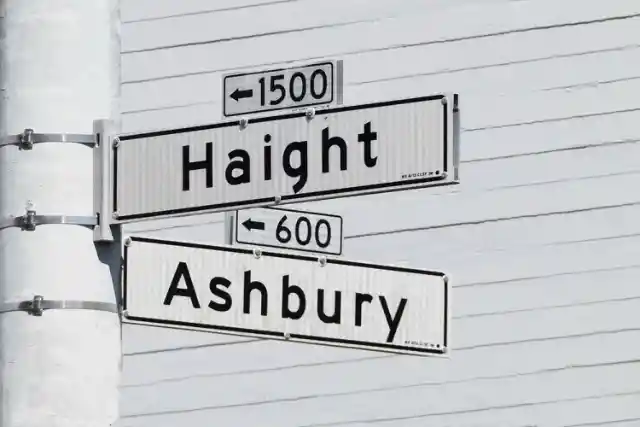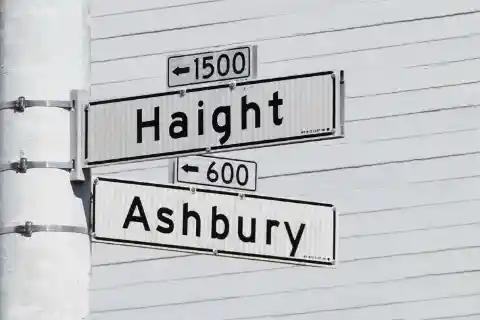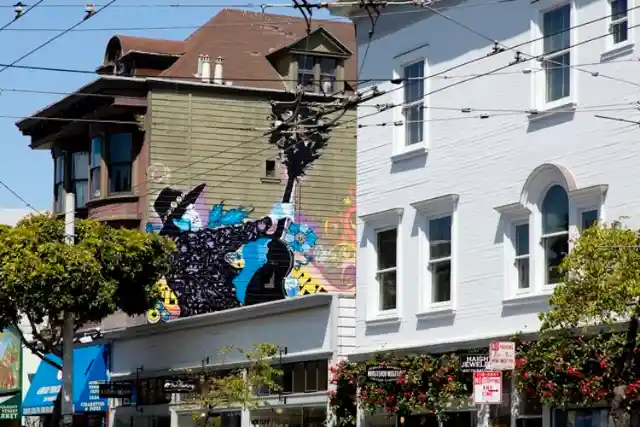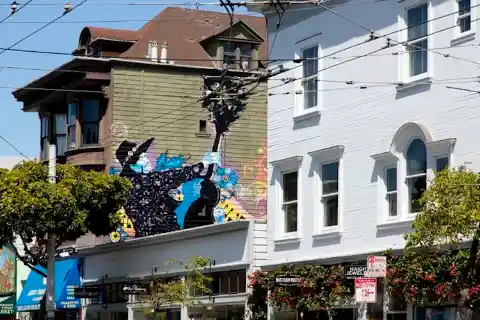The Notable Neighborhood
The famous street intersection of Haight and Ashbury, which is now home to San Francisco’s hippie counterculture neighborhood, dates back to the 1960s. From modest beginnings to a psychedelic attitude that would eventually sweep the nation and alter the course of history. With the hippie culture still thriving, its vivid colors and exquisite Victorian homes serve as a historical witness to the era.


It started off as an undeveloped region in the 1800s with simple, vast farms and sand dunes. The Haight Cable Car Line wasn’t built until 1883, allowing the neighborhood to be connected to both downtown San Francisco and Golden Gate Park. The Chutes, a theme park, opened its doors in 1886. After the California League, Baseball Grounds stadium was finished in 1887, the region gradually developed into a flourishing entertainment spot. Henry Haight and Munroe Ashbury, pioneers and exchange bankers as well as San Francisco neighborhood builders, are credited with giving the street its original name.
The effects of the Great Depression and a plan to build a motorway through the neighborhood in the 1950s caused the housing market to collapse, leading to cheaply priced rooms for rent and foreclosed homes.
The Rise To Prominence


The Beat Generation, a literary movement that challenged 1950s social norms, had an influence on the area in the 1960s, which saw an inflow of hippies. Young people from all around America who were enthusiastic about the counterculture ideas of drugs and music would be drawn to the colorful homes and affordable rent. The region, dubbed “Hashbury” by Hunter S. Thompson in The New York Times, swiftly rose to prominence in the counterculture movement. In January 1966, the legendary Psychedelic Shop opened its doors, giving the neighborhood simple access to drugs like LSD and marijuana.
The Psychedelic Shop and the nearby coffee shop The Blue Unicorn were seen as communal unifiers since they attracted freaks, heads, and hippies alike. Rock music icons like The Grateful Dead, Janis Joplin, and Jefferson Airplane gave the crossroads tremendous prominence through their songs and music, and they frequently performed there because they lived nearby. With their beliefs in a free society and the goodness of human nature, a street theater group known as The Diggers also contributed to history. They established the first free medical facility of its sort and a store that offered free meals.
The height of the enlightened, psychedelic era would come in 1967, during what is now known as “The Summer of Love.” Over 100,000 individuals would eventually move to Haight Ashbury, which swiftly rose to prominence as a hub for free speech, artistic expression, free love, free drugs, and free food. In June, 60,000 people would attend the Monterey Pop Festival, and the song “San Francisco (Be Sure to Wear Flowers in Your Hair)” would become a smash hit.
A Big Impact
More and more people were packing their cars and arriving in San Francisco to join the revolution as a result of the intense media attention and the song by Scott McKenzie taking the country by storm. The neighborhood soon developed problems with homelessness, hunger, drug addiction, overcrowding, and violence due to the utter absence of police authority and the rise of hard drugs. When hippies were made to leave, they carried the spirit of Haight Ashbury with them and propagated the love of free thought throughout the world by returning to their hometowns.
While the prominent era of Haight Ashbury came to a close, the love and good vibes live on in San Francisco and other parts of the world. And even though this movement was likely to end the way it did from the start, the era cultivated a culture of diversity, freedom of expression, and a feeling of community that is still at the heart of the city by the bay.